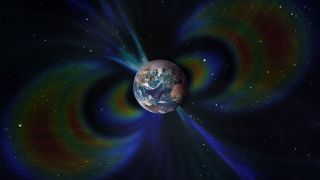
"Today, the Earth's liquid core is still a terpsichorean frenzy of electric currents, which generate a magnetic field." (Image credit: Shutterstock)
The image of an atom, with electrons swarming around a central nucleus bulging with protons and neutrons, is as iconic in our perception of science as the DNA helix or the rings of Saturn. But however much we scratch the surface of these scientific fundamentals, we can go even deeper, focusing that microscope further and discovering even more forces that govern our world.
In his new book "CHARGE: Why Does Gravity Rule?", theoretical physicist Frank Close explores the fundamental forces that govern our world, posing questions along the way that seek to explain how the delicate balance of positive and negative charges paved the way for gravity to shape our universe.
In this except, he explains how magnetism, the most tangible fundamental forces, was discovered, where it comes from and how it got its name. READ MORE...
The image of an atom, with electrons swarming around a central nucleus bulging with protons and neutrons, is as iconic in our perception of science as the DNA helix or the rings of Saturn. But however much we scratch the surface of these scientific fundamentals, we can go even deeper, focusing that microscope further and discovering even more forces that govern our world.
In his new book "CHARGE: Why Does Gravity Rule?", theoretical physicist Frank Close explores the fundamental forces that govern our world, posing questions along the way that seek to explain how the delicate balance of positive and negative charges paved the way for gravity to shape our universe.
In this except, he explains how magnetism, the most tangible fundamental forces, was discovered, where it comes from and how it got its name. READ MORE...